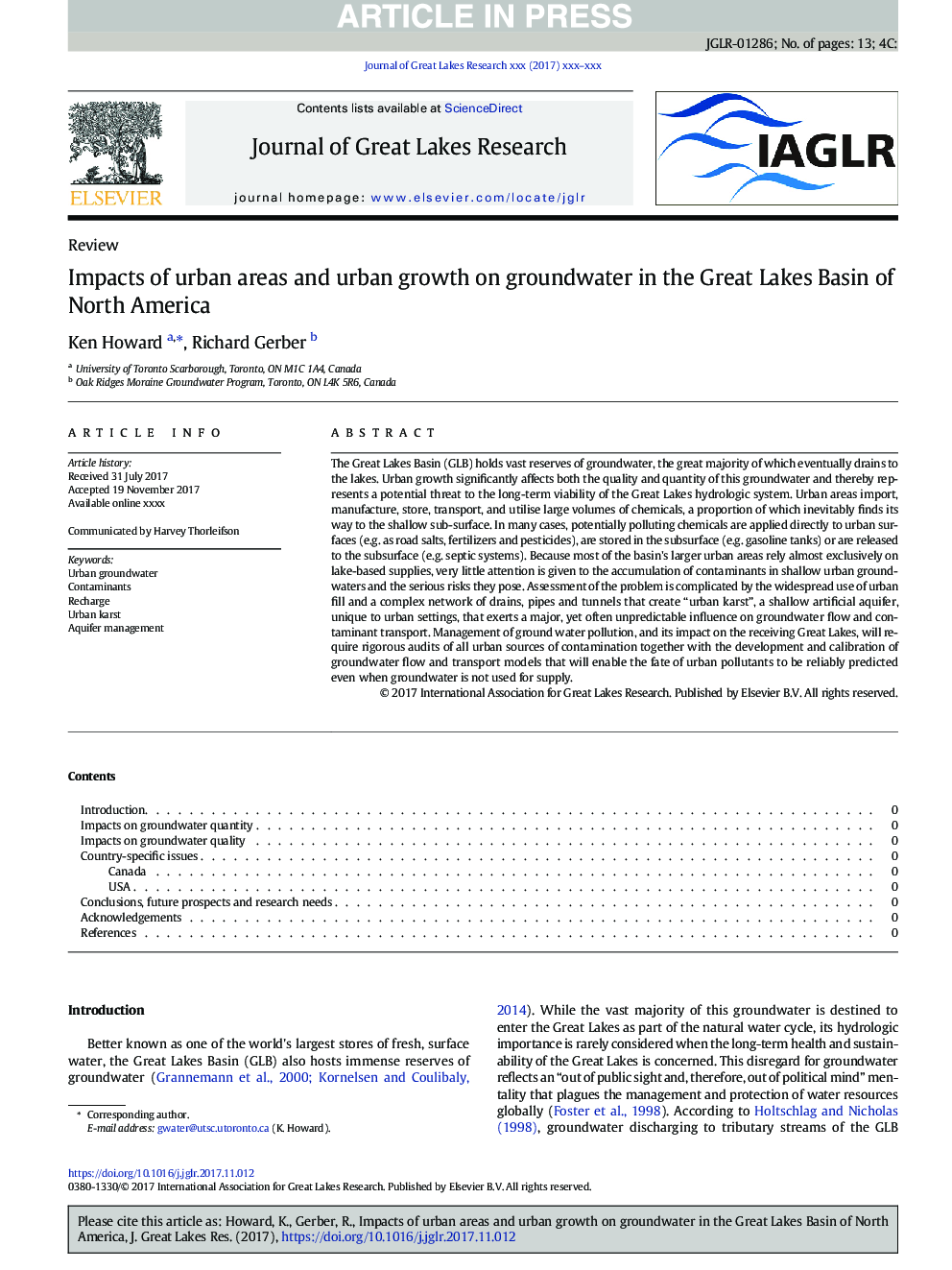| کد مقاله | کد نشریه | سال انتشار | مقاله انگلیسی | نسخه تمام متن |
|---|---|---|---|---|
| 8849142 | 1618517 | 2018 | 13 صفحه PDF | دانلود رایگان |
عنوان انگلیسی مقاله ISI
Impacts of urban areas and urban growth on groundwater in the Great Lakes Basin of North America
ترجمه فارسی عنوان
تأثیرات مناطق شهری و رشد شهری در آبهای زیرزمینی در حوضه دریاچه های بزرگ آمریکای شمالی
دانلود مقاله + سفارش ترجمه
دانلود مقاله ISI انگلیسی
رایگان برای ایرانیان
کلمات کلیدی
آبهای زیرزمینی شهری، آلاینده ها، شارژ، کارست شهری، مدیریت آب آشامیدنی،
موضوعات مرتبط
مهندسی و علوم پایه
علوم زمین و سیارات
علوم زمین و سیاره ای (عمومی)
چکیده انگلیسی
The Great Lakes Basin (GLB) holds vast reserves of groundwater, the great majority of which eventually drains to the lakes. Urban growth significantly affects both the quality and quantity of this groundwater and thereby represents a potential threat to the long-term viability of the Great Lakes hydrologic system. Urban areas import, manufacture, store, transport, and utilise large volumes of chemicals, a proportion of which inevitably finds its way to the shallow sub-surface. In many cases, potentially polluting chemicals are applied directly to urban surfaces (e.g. as road salts, fertilizers and pesticides), are stored in the subsurface (e.g. gasoline tanks) or are released to the subsurface (e.g. septic systems). Because most of the basin's larger urban areas rely almost exclusively on lake-based supplies, very little attention is given to the accumulation of contaminants in shallow urban groundwaters and the serious risks they pose. Assessment of the problem is complicated by the widespread use of urban fill and a complex network of drains, pipes and tunnels that create “urban karst”, a shallow artificial aquifer, unique to urban settings, that exerts a major, yet often unpredictable influence on groundwater flow and contaminant transport. Management of ground water pollution, and its impact on the receiving Great Lakes, will require rigorous audits of all urban sources of contamination together with the development and calibration of groundwater flow and transport models that will enable the fate of urban pollutants to be reliably predicted even when groundwater is not used for supply.
ناشر
Database: Elsevier - ScienceDirect (ساینس دایرکت)
Journal: Journal of Great Lakes Research - Volume 44, Issue 1, February 2018, Pages 1-13
Journal: Journal of Great Lakes Research - Volume 44, Issue 1, February 2018, Pages 1-13
نویسندگان
Ken Howard, Richard Gerber,
